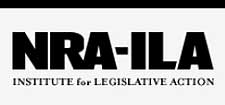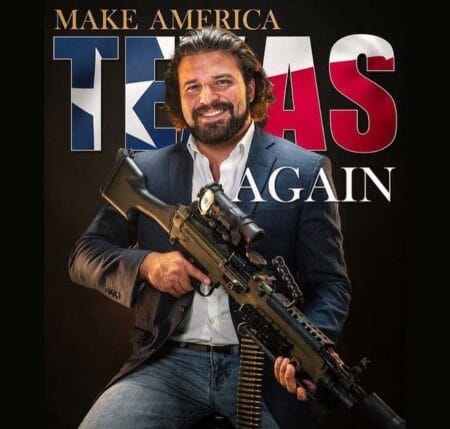Opinion

On April 1, the Trump administration announced wide-ranging reforms to the embattled U.S. public health bureaucracy. According to an article from Politico, part of the reform effort is a “reduction in force that aims to cut 10,000” federal employees under the Department of Health and Human Services (HHS). HHS is the parent organization for a host of government agencies, including the Centers for Disease Control and Prevention (CDC).
Among the cuts to CDC included a reduction in force targeting the National Center for Injury Prevention and Control (NCIPC). Gun rights supporters may recognize the NCIPC as the epicenter of the CDC’s longstanding anti-gun efforts. The Associated Press lamented, “Many of the layoffs reported were in areas involving deaths and injuries from things other than infectious diseases. That included programs that track and prevent… gun violence.”
A reporter from the leftwing publication Mother Jones claimed to have spoken with some anonymous CDC employees, who shed further light on the Trump reforms. The Mother Jones item stated:
An employee I’ll call Amanda (she didn’t want me to use her name for fear of retribution) works in the Web-Based Injury and Statistics Query and Reporting System (WISQARS) a team within the Injury Center that is responsible for processing all the data around injuries, including both fatal and nonfatal injuries caused by guns. Her branch of 40 employees all received RIF notices. “The cost analysis, the return on investment, all of the non-fatal and fatal data processing that goes to our lobbyists, our congressmen, our decision-makers, senators—all of that is gone,” she said. [emphasis added]
Readers can decide for themselves what the CDC employee meant by “our lobbyists.” However, it’s clear the institutional gun control lobby is not happy with this development.
Gun control group Giffords (formerly Americans for Responsible Solutions and the Second Amendment-denying Legal Community Against Violence), weighed in with the predictable take that the Trump administration reform was a “reckless move puts us all at risk.”
Brady (formerly Handgun Control, Inc.) opined, “Working in tandem with the Trump Administration’s ‘guns everywhere’ agenda, these cuts are the latest action designed to curb our efforts to tackle gun violence.” The group even exploited the opportunity to encourage its followers to see if they could grab a few guns from the recently laid-off bureaucrats, stating: “As so many public servants feel the devastating effects of these layoffs, Brady underscores the importance of checking in on loved ones who are experiencing economic hardship and mental health crises, including asking about access to unsecured guns.”
The gun control lobby’s complaints were to be expected. The CDC, and broader public health community has a long history of gun control advocacy and has even sought to suppress research that runs counter to their anti-gun ideology.
In the early 1980s the CDC started to express an interest in curbing firearms.
In 1983, the CDC established its Violence Epidemiology Branch, which set forth to apply a “public-health approach” to what are more appropriately understood as criminal justice matters. Under this new rubric, firearms would be treated akin to germs transmitting a communicable disease. Of course, criminal violence perpetrated with firearms is best understood as a criminal justice issue and addressed by vigorously prosecuting violent perpetrators who misuse firearms.
In the December 1984 issue of Science, the CDC expressed its interest in targeting gun ownership. A CDC staffer who insisted on anonymity sorrowfully noted, “Because of the Reagan administration’s anti-gun-control stance, the CDC has tiptoed around the issue of gun control.” Making clear the agency’s desire to attack firearms, the source added, “The violence branch is in a fledgling state. If it steps too hard on the gun issue, it would be squashed in a heartbeat.”
Sniffing out the CDC’s motives from the start, NRA Information and Member Services characterized the article’s contents by explaining, “After losing numerous legislative fights in the gun control battle, handgun control groups now are trying an end-run political tactic in a new area—public health policy.”
Over the years the brazenness of HHS and the CDC’s anti-gun stance grew. HHS Secretary Louis W. Sullivan, head of the CDC’s parent agency, declared in 1990, “I want to do everything in my power to discourage the use and availability of handguns.”
The 1990s brought overt CDC collaboration with gun control activists.
In May 1993, CDC released a report titled “Injury Control in the 1990s: A National Plan for Action.” A portion titled “Support for the National Plan” explained that a host of “organizations participated in the development or review of the national plan” and listed Handgun Control, Inc. and CPGV as supporters of the document.
The CDC plan read like a gun-control lobby wish list, recommending, “New legislative and regulatory efforts to be considered are to prohibit the manufacture, importation, and sale of handguns except in special circumstances; establish a national waiting period for all purchases of firearms, coupled with a mandatory criminal record background check; establish nationwide restrictive licensing of handgun owners whereby a handgun license would be granted only when a clear, legitimate need for possessing a handgun is demonstrated (e.g. for professional use).”
In 1994, CDC National Center for Injury Prevention Director Mark Rosenberg told The Washington Post of his intent to transform public perception of firearms in the same manner as had been done with cigarettes, by making guns “dirty, deadly—and banned.”
In 1995, the CDC bankrolled an anti-gun edition of the Injury Prevention Network Newsletter. The publication urged readers to engage in an array of anti-gun advocacy. This included commands to “put gun control on the agenda of your civic or professional organization,” “make your support for federal, state, and local gun laws known to your representatives,” and “organize a picket at gun manufacturing sites.”
By 1996, Congress had seen enough taxpayer money wasted on political advocacy. At NRA’s urging, lawmakers added a simple amendment to federal law making clear that “none of the funds made available for injury prevention and control at the Centers for Disease Control and Prevention may be used to advocate or promote gun control.”
Contrary to the media spin and the gun-control lobby’s wailing, the language didn’t restrict the CDC from studying “gun violence.” It did, however, prohibit the kind of gun-control advocacy the agency engaged in between 1983 and 1996.
However, in the years since the funding amendment the CDC worked its way back into the firearm issue.
In 2021, while the agency was reeling from its lackluster performance during an actual communicable disease epidemic, the Biden administration sought to leverage the agency in its “whole-of-government” assault on firearms.
In August 2021, CDC Director Rochelle Walensky sat down with CNN to announce the agency’s intent to target gun owners. Speaking about firearms, Walensky said, “I swore to the president and to this country that I would protect your health. This is clearly one of those moments, one of those issues that is harming America’s health.”
Then there are the CDC’s efforts to downplay research that runs counter to the agency’s traditional anti-gun narrative.
In early 1993, Florida State University professors of criminology Gary Kleck and Marc Gertz sought to measure the prevalence of defensive gun uses (DGUs). The pair designed the National Self-Defense Survey and polled Americans by telephone on whether they had used a gun for self-defense.
The researchers published their results in an article titled “Armed Resistance to Crime: The Prevalence and Nature of Self-Defense with a Gun,” which appeared in the Fall 1995 edition of the Journal of Criminal Law and Criminology. The key finding was that the survey data indicated “each year in the U.S. there are about 2.2 to 2.5 million DGUs of all types by civilians against humans.”
Following Kleck and Gertz’s landmark study, from 1996 to 1998, CDC used its Behavioral Risk Factor Surveillance System (BRFSS) to survey Americans about DGUs. Specifically, the CDC survey asked respondents, “During the last 12 months, have you confronted another person with a firearm, even if you did not fire it, to protect yourself, your property, or someone else?”
Despite conducting this interesting research, the agency didn’t report on their findings at the time. The CDC survey data finally came to light in 2018.
Analyzing the CDC survey along with his own research, Kleck found that the CDC data indicated that there are likely more than 1 million DGUs per year. In a September 2020 paper titled “What Do CDC’s Surveys Say About the Prevalence of Defensive Gun Use?” Kleck explained, “Even when CDC, an organization perceived by some to be strongly ‘anti-gun,’ devised and conducted the surveys, their survey results implied huge estimates of defensive gun uses—over a million per year, far more than the number of violent crimes in which offenders used guns.”
Illustrating a continuing anti-gun bias, in 2023 information came to light about the CDC suppressing information about the prevalence of DGUs at the behest of gun control advocates.
In early 2022, reference to the Kleck study’s 2.5 million DGUs appeared on CDC’s website in a document titled “Fast Facts: Firearm Violence Prevention,” as an answer to the questions “What is defensive gun use? How often does it occur?” However, in May 2022, estimates of the prevalence of DGUs were removed from the fact sheet.
According to firearms politics publication The Reload, this suppression of science occurred following a lobbying effort by gun-control advocates. The Reload article explained, “The lobbying campaign spanned months and culminated with a private meeting between CDC officials and three advocates last summer.” Illustrating the level of influence the anti-gun activists were able to exert, the piece noted, “Introductions from the White House and Sen. Dick Durbin’s (D.-Ill.) office helped the advocates reach top officials at the agency … .”
Gun owners should be encouraged by President Trump’s efforts to reform HHS and CDC and be hopeful that the recent reforms lead to the wayward public health bureaucracy focusing on confronting actual communicable disease rather than diminishing fundamental rights.
For more about CDC’s anti-gun history gun owners are encouraged to read the following items from NRA’s publications:
Trust the Science?
Why National Concealed Carry and Due Process Protection Are a Big Deal for Gun Owners ~ VIDEO
Rep. Hinson & Sen. Cotton Reintroduce Bill to Repeal Firearm Transfer Tax
About NRA-ILA:
Established in 1975, the Institute for Legislative Action (ILA) is the “lobbying” arm of the National Rifle Association of America. ILA is responsible for preserving the right of all law-abiding individuals in the legislative, political, and legal arenas, to purchase, possess, and use firearms for legitimate purposes as guaranteed by the Second Amendment to the U.S. Constitution. Visit: www.nra.org








Interesting how the CDC refused to “follow the science” with COVID. They’d been doing that for years on the “gun violence” issue.
Can the leopard change his spots?
Chalk up one more YOOOOOGE win for Trump with this issue.
I’m hearing rumors that there will be no NRA-ILA speakers forum at this year’s annual meeting! Is this possible?! Trump and his team have been regular contributors, but I don’t see anything listed under Atlanta “Events.” What up? Do you guys know anything? How can we impact legislation if members can’t make their voices heard?
scamdimic kings that prevented the ,sale and advertising of something that would have prevented spread of covid and bird flu , look it up the science has been around FAR c 222 nm uv light , this is about the kickbacks criminals in government have been getting from big pharma
Allegedly NRA BoD Ken Blackwell was in a money laundering scheme using $21million in taxpayer funds and sending it to anti gun groups…
https://www.ammoland.com/2025/02/dark-web-of-taxpayers-money-funds-anti-gun-organizations/
The CDC like many other government agencies have shown quite clearly that bureaucrats run unchecked which is dangerous for our country. There are lots of agencies of our government that should be cut to the bone or outright eliminated because they do not fit within the bounds or our Constitution.
Neither violence nor firearms should be studied at all by the cdc, which is by law to focus on disease. Not a penny should be spent on anything that isn’t a disease, virus, bacteria, etc.